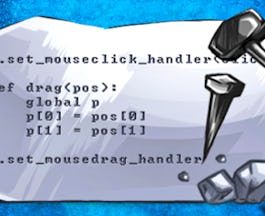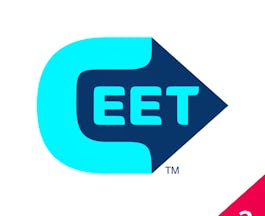Filter by
The language used throughout the course, in both instruction and assessments.
Choose the Elastic Stack Course That Aligns Best With Your Educational Goals

Google Cloud
Skills you'll gain: Google Cloud Platform, Linux

Skills you'll gain: Computer Vision, Deep Learning, Machine Learning, Machine Learning Algorithms, Artificial Neural Networks, Visualization (Computer Graphics), Algorithms, Applied Machine Learning, Machine Learning Software, Python Programming, Computer Programming, Data Science
 Status: Free
Status: FreeThe Hong Kong University of Science and Technology
Skills you'll gain: Algebra, Mathematics, Critical Thinking, Geometry, Linear Algebra, Mathematical Theory & Analysis

Skills you'll gain: Computer Programming, Python Programming, Programming Principles, Computational Logic, Mathematics, Computer Graphics, Computer Programming Tools, Problem Solving, Visualization (Computer Graphics), Critical Thinking

CertNexus
Skills you'll gain: Risk Management, Critical Thinking, Generally Accepted Accounting Principles (GAAP), Leadership and Management, Operating Systems, Probability & Statistics, Project Management, Security Engineering, Strategy and Operations, Regulations and Compliance, General Statistics

Imperial College London
Skills you'll gain: Applied Machine Learning, Artificial Neural Networks, Deep Learning, Machine Learning, Python Programming, Tensorflow

Skills you'll gain: Data Analysis, Exploratory Data Analysis, Extract, Transform, Load, Data Visualization, Machine Learning, Communication, Data Mining, Data Model, Data Science, Regression
 Status: Free
Status: FreeWesleyan University
 Status: Free
Status: FreeUniversity of Virginia
Skills you'll gain: Critical Thinking, Experiment, Problem Solving, Angular, Mathematical Theory & Analysis, Scientific Visualization, Deep Learning, Feature Engineering, Reinforcement Learning

Skills you'll gain: Computer Programming, Programming Principles, Python Programming, Computational Logic, Computer Programming Tools, Critical Thinking, Computational Thinking, Mathematics, Problem Solving, Algorithms
 Status: Free
Status: FreeUniversitat Autònoma de Barcelona
Skills you'll gain: Mathematics, Calculus, Problem Solving, Algebra, Mathematical Theory & Analysis, Linear Algebra, Angular, Geometry, Operational Analysis

Johns Hopkins University
Skills you'll gain: Calculus, Mathematical Theory & Analysis, Mathematics, Algebra, Problem Solving
Searches related to elastic stack
In summary, here are 10 of our most popular elastic stack courses
- Using Elastic Stack to Monitor Google Cloud: Google Cloud
- Introduction to Computer Vision and Image Processing: IBM
- Fibonacci Numbers and the Golden Ratio: The Hong Kong University of Science and Technology
- An Introduction to Interactive Programming in Python (Part 2): Rice University
- Detect and Mitigate Ethical Risks: CertNexus
- Getting started with TensorFlow 2: Imperial College London
- CertNexus Certified Data Science Practitioner: CertNexus
- Social Psychology: Wesleyan University
- How Things Work: An Introduction to Physics: University of Virginia
- An Introduction to Interactive Programming in Python (Part 1): Rice University










